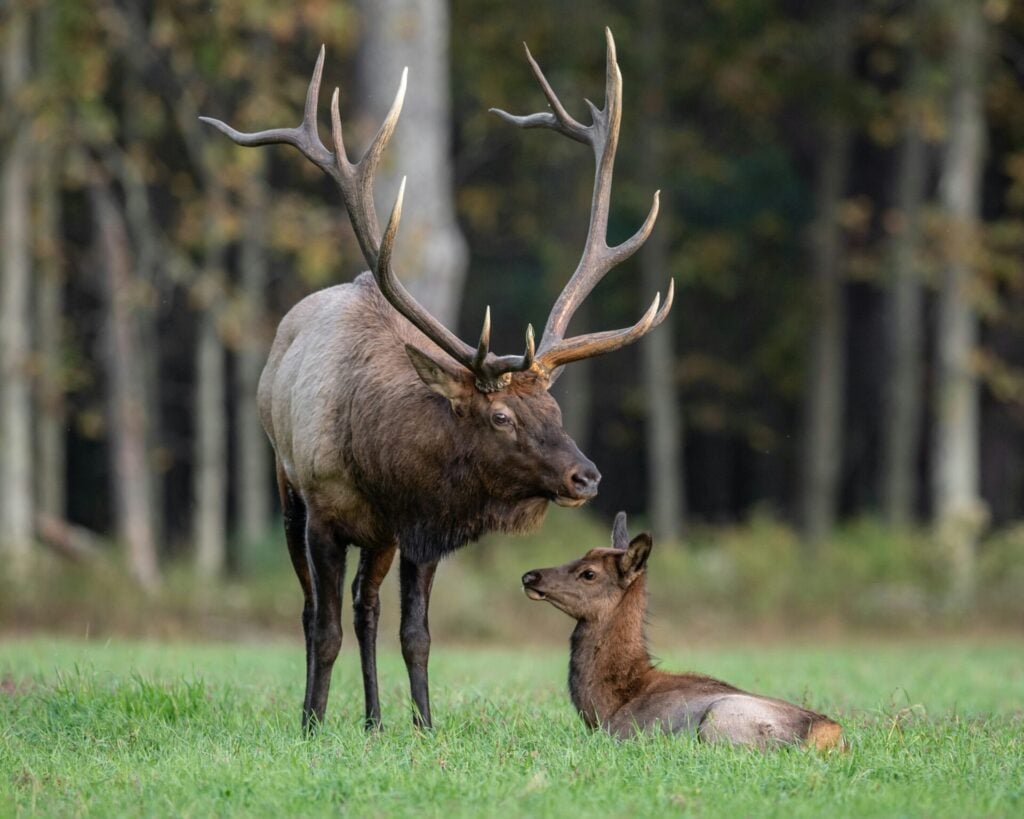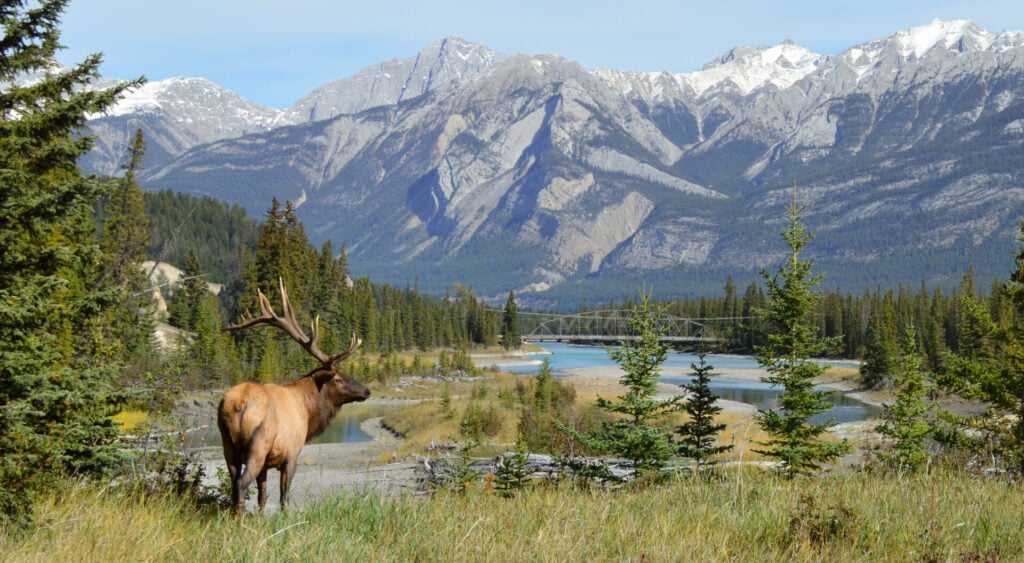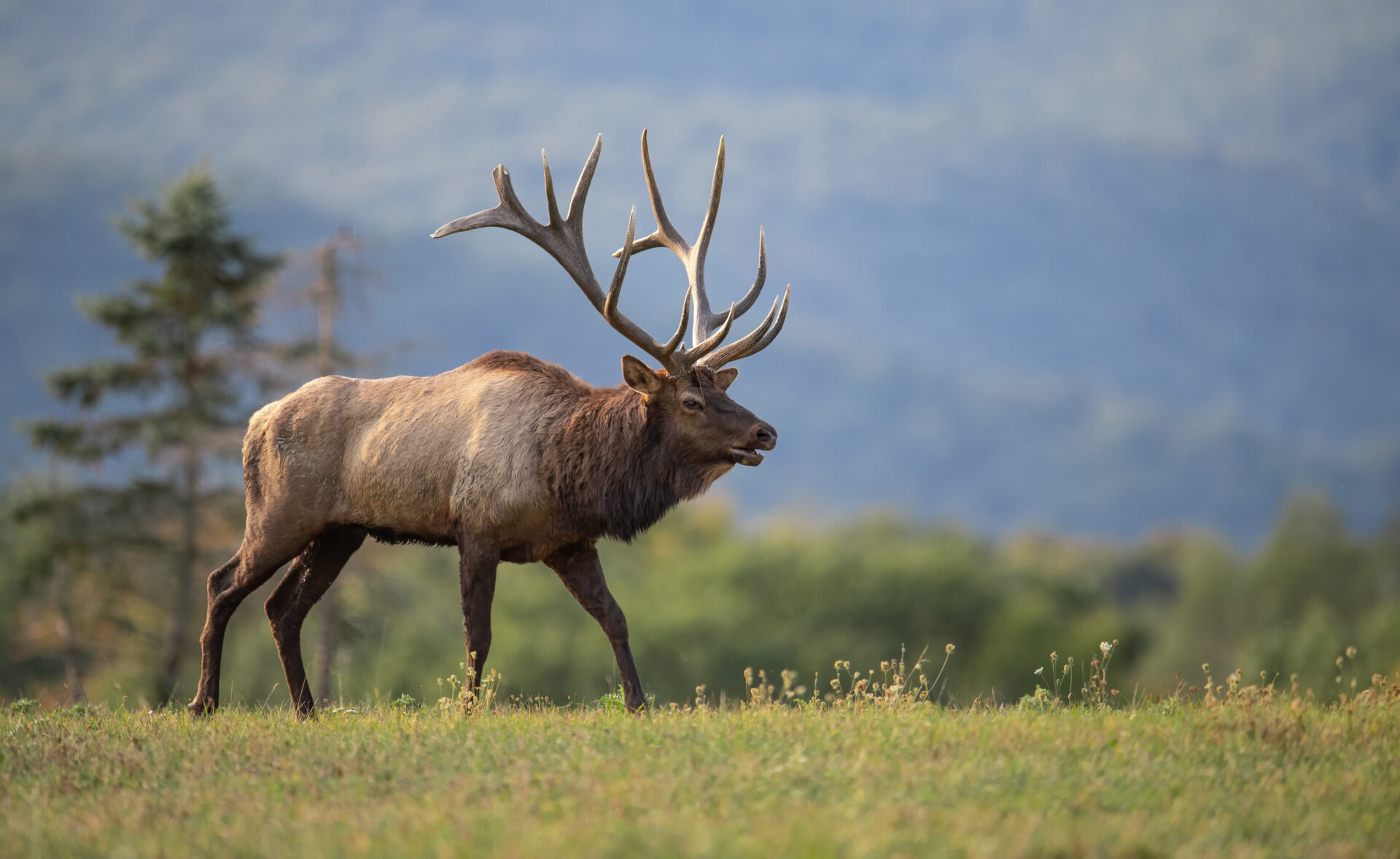Elk could return to the UK after 3,000 years under plans to reintroduce the species into Britain’s landscapes.
The Derbyshire Wildlife Trust (DWT) wants to introduce elk into two existing beaver enclosures in Derbyshire and Nottinghamshire, demonstrating that the large semi-aquatic deer scan be released to roam free in the wild.
Rachel Bennett, the Deputy Director of Wilder Landscapes at the trust, said: ‘This exciting project could demonstrate how this crucial ecosystem engineer can thrive in floodplain landscapes, shaping diverse habitats that benefit communities and support biodiversity recovery. It may also serve as a catalyst for engaging people in the long-term benefits of returning elk to the wild.’
The Elk’s Long Journey Home
The species became extinct in the UK about 3,000 years ago as a result of over-hunting and habitat loss, and were nearly wiped out across Europe. But they are slowly making a return, with established populations in Scandinavia.

DWT’s Joanne Carnell, said the group wanted to demonstrate that the ‘crucial ecosystem engineer can thrive in floodplain landscapes, shaping diverse habitats that benefit communities and support biodiversity recovery.’
‘It may also serve as a catalyst for engaging people in the long-term benefits of returning elk to the wild,’ she added.
The same process was undertaken with beavers in England, which were first released into enclosures in wildlife areas around the country, before being legally released into the wild this year.
Rebecca Wrigley, the chief executive of Rewilding Britain, said: ‘Keystone species like elk, bison and beaver play a vital role in bringing nature back to life. They help repair ecosystems and shape wild places in ways that benefit wildlife, people and the climate.

‘Successfully reintroducing missing species like these is absolutely crucial. It’s a complex process involving multiple stages of research and development, feasibility studies, impact assessments and community consultations. By taking the time and effort to get it right, we can create a more hopeful future for everyone.’
European elk are closely related to the North American moose and can weigh up to 700kg. They thrive in wetlands, where their grazing helps promote the natural regeneration of woodland, while their trampling helps maintain open clearings.
The plan follows a similar scheme to reintroduce bison to one of southeast England’s largest areas of ancient woodland.
Three female bison were released into the countryside near Canterbury, Kent, in July 2022. A bull bison was introduced later and two baby bison have since been born.









